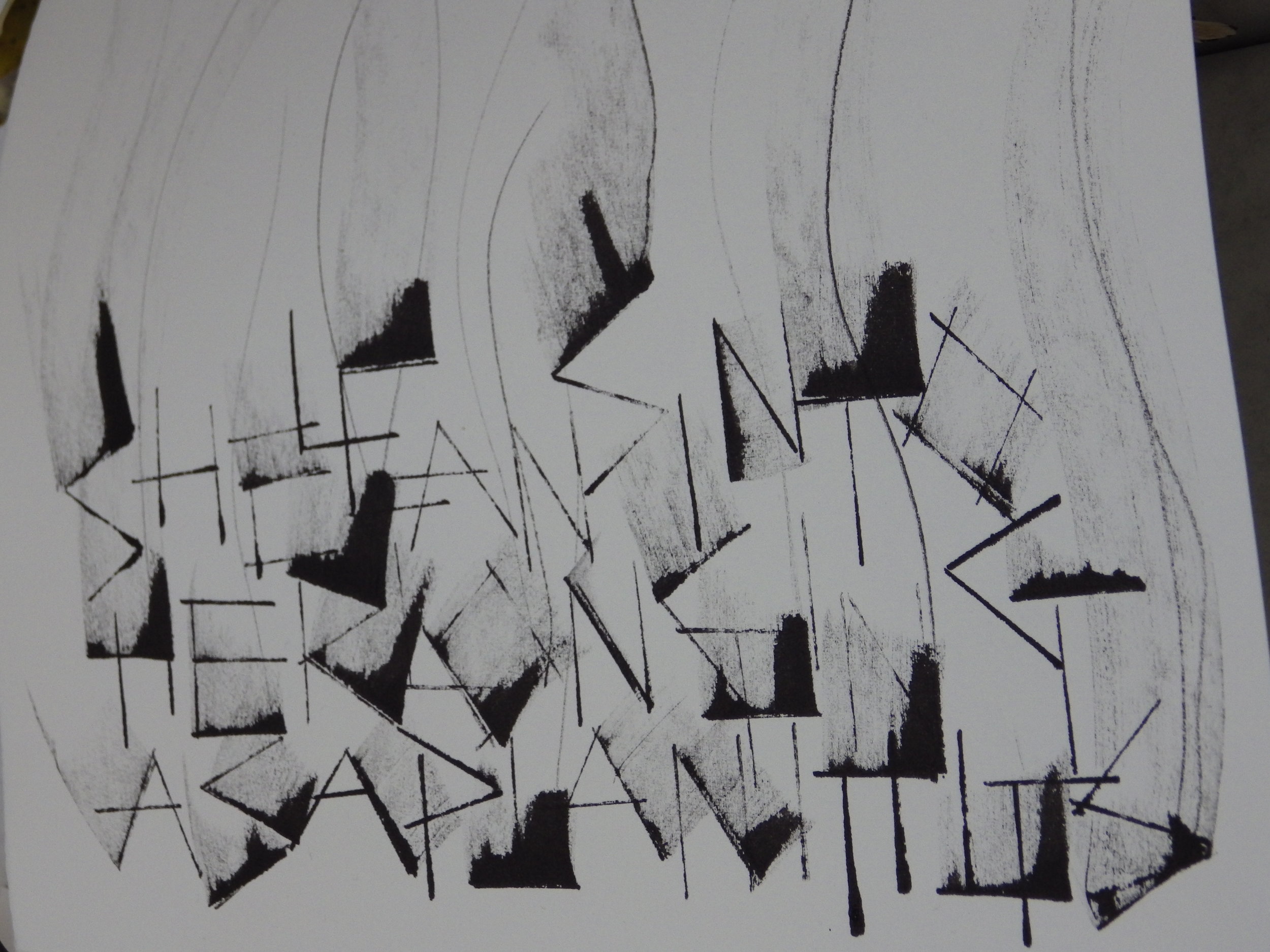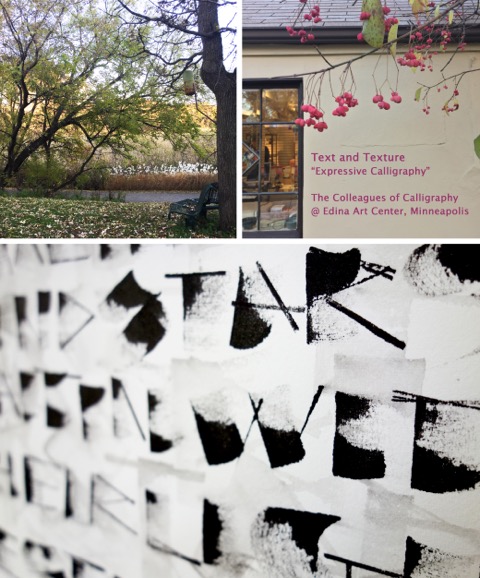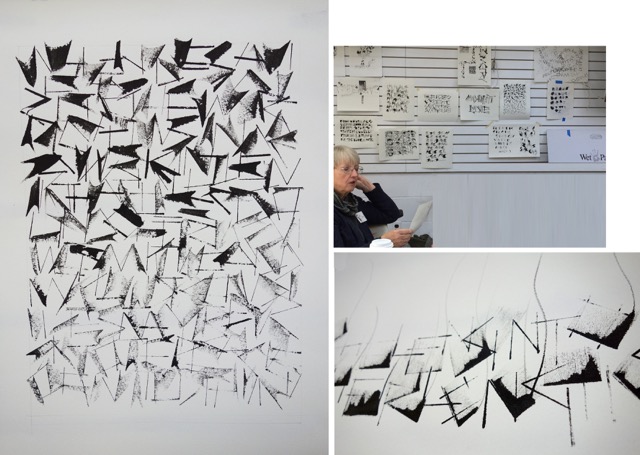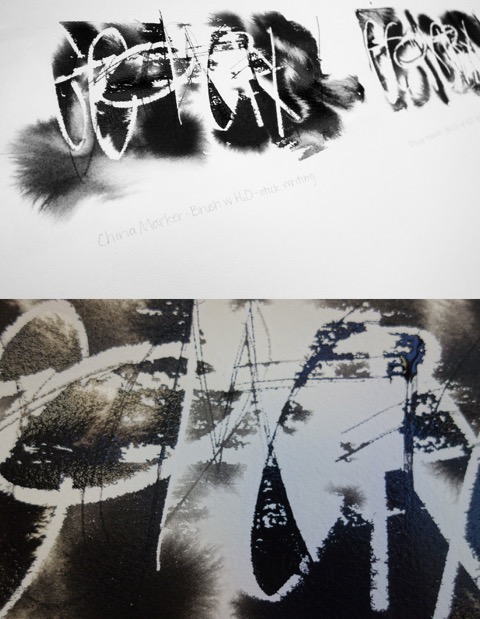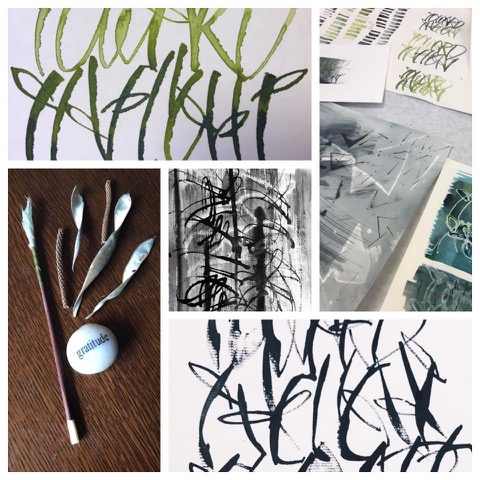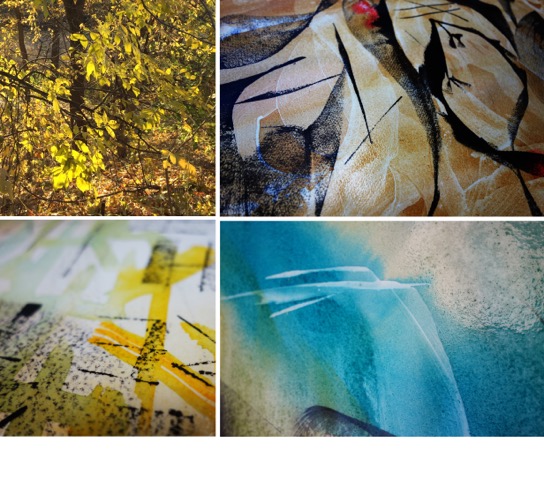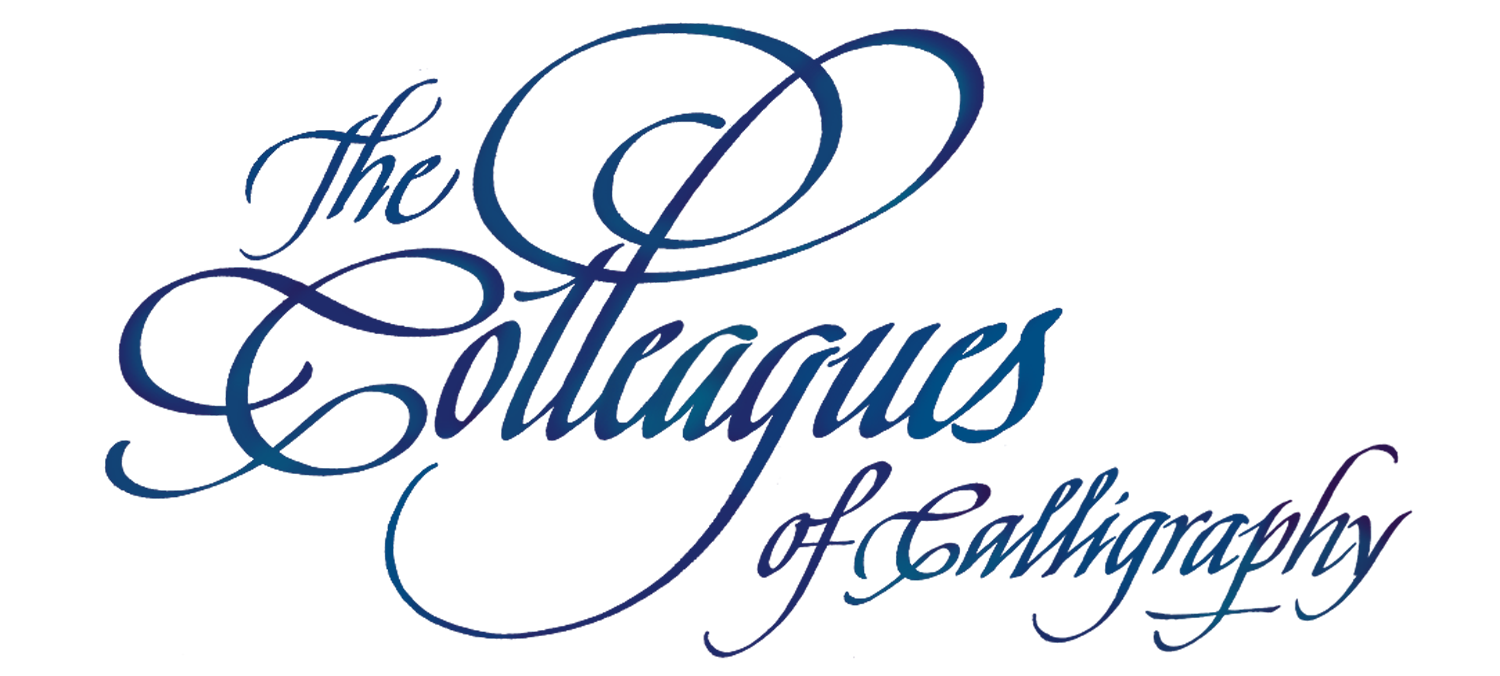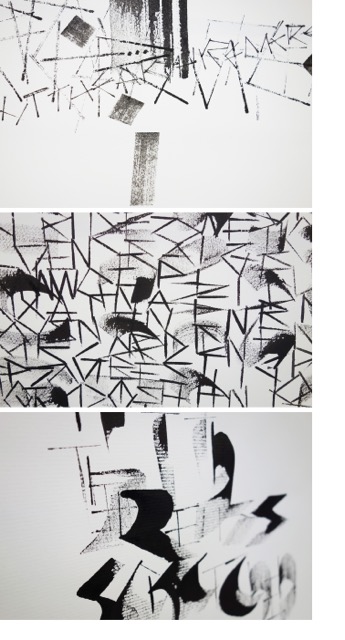A review of Text and Texture: Expressive Calligraphy
The single mark, layered, squeezed, stretched, connected, or bounced was the foundation for texture and expression in this 2-day adventure with Yukimi Annand.
The mark itself can be likened to a single stroke of a letter, with texture resulting from multiple marks made with rhythm, direction and other elements. The mark and the text relate on many levels, creating emotion and expression. “The textures we calligraphers make with strokes and marks have specific character.”
Yukimi demonstrated her body-mind-spirit approach to the first mark and the blank page with a moment of personal stillness as she directed inner energy up from her core and to her hands.
“Before we draw strokes, our minds and bodies need to be ready.” We learned that expressive calligraphy needs the heart as well as the hand.
This workshop was filled with a variety of mediums, tools and found objects such as twigs, bark, rocks, shells, and seed pods. The mark on the paper was a unique visual record of the tool which made it. Beginning with a simple piece of balsa wood, and gently dipping its edge into sumi ink, we “stamped” its narrow edge onto the paper. These single lines were then positioned or joined to form primitive straight-lined Roman capitals—no curves allowed! In almost every case, the tool became a teacher, telling us what was possible with regard to the marks we made. Curves were not possible!
Density in texture came about through layering mark upon mark. Rhythm sometimes became the strongest voice on the paper. Later, we dragged the balsa edge in one direction producing a brush-like effect, either in a straight line or a curve (now permitted!) Sometimes we developed a counterpoint of rhythm and value, using both thick and thin lines, or contrasting full-strength sumi with a diluted, lighter-value sumi. Yukimi distributed larger balsa pieces and sheets of Japanese Hanshi, a machine made calligraphy practice paper made of kozo from the mulberry tree. Once again the balsa was dipped in a pool of sumi, and then drawn across the paper in swirls, lines and flowing marks. Later, we would return to them.
Yukimi reviewed basic composition and encouraged us to arrange marks on the paper toward harmony and balance, noting different possibilities for focus or “point of emphasis”.
We exchanged our flat tool for the basic monoline instrument—the humble pencil. We were asked to consider just one letter—capital A. Yukimi guided us in creating many variations of A. Each person finally chose one A on which to base the entire alphabet—each letter having to relate to the chosen A variation in structure, direction, rhythm and movement. Everyone’s alphabet was different, having been created from within rather than copied from a pre-determined exemplar.
Early in the workshop we were reminded to think about our pre-chosen text and its meaning. The alphabet variation at this stage was to be appropriate for our individual text. We wrote sentences, phrases or a single word over and over using our newly developed alphabet—first in pencil and then followed by other tools we had.
This was a workshop rich in demonstrations where we could witness a technique and then go back to our workstations to do it. Yukimi wrote with fine line applicator bottles, their needle tips gliding across the paper, leaving a lacy pattern in fluid acrylic paint/medium. She showed us how to add balsa swipes of matte medium to our sumi-covered Hanshi paper.
After some tips on color mixing, we tried our alphabets in color with the folded pen and the pointed brush. This produced still another version of rhythm, value and harmony. Each tool brought forth its own unique look. Yukimi coached us in applying color combined with collage on our good paper and sometimes on the Japanese paper.
We learned to capture harmonious points of focus by using small viewfinders to crop our work into segments or miniature compositions. This was a valuable idea. Suddenly a “failed piece” was brought to elegant success!
We carefully numbered our charcoal paper work pages. At the end of day 2, we learned a quick, no fuss binding technique, transforming our practice sheets into a book, complete with cover and its decorative miniature.
Inspiration, discovery, new directions, and possibilities for the future—these are the marks of a dynamic learning experience, in this case, delivered by a truly gifted artist and teacher. Thank you, Yukimi!












